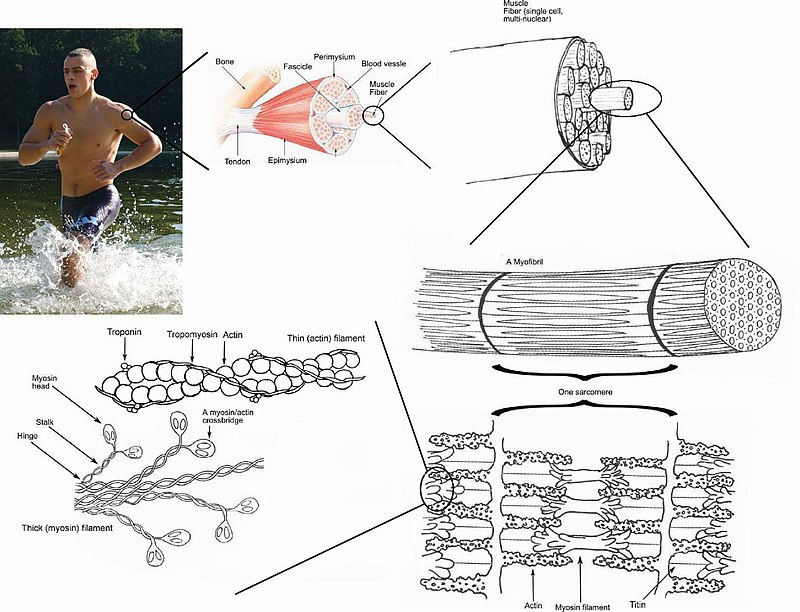Translations:AY Honors/Bones, Muscles, and Movement/Answer Key/73/en
From Pathfinder Wiki
- When the muscle is in a resting state, thin strands of a protein called tropomyosin are wrapped around the actin filaments, blocking the myosin binding sites. This keeps the myosin from binding to actin.
- Molecules called troponin are attached to the tropomyosin.
- When calcium is introduced into the muscle cell, calcium ions bind to troponin molecules.
- Calcium then pulls troponin, causing tropomyosin to be moved as well, therefore causing the myosin binding sites on the actin to be exposed.
- Myosin binds to the now-exposed binding sites.
- As soon as the myosin head binds to actin, the head bends at its hinge.
- Once the head bends, the myosin loses energy, and remains attached to the actin.
- When re-energized by adenosine triphosphate (ATP), the myosin head detaches from the actin filament, and is ready to attach and bend again.
- The collective bending of numerous myosin heads (all in the same direction), combine to move the actin molecules closer together. This results in a muscle contraction.

